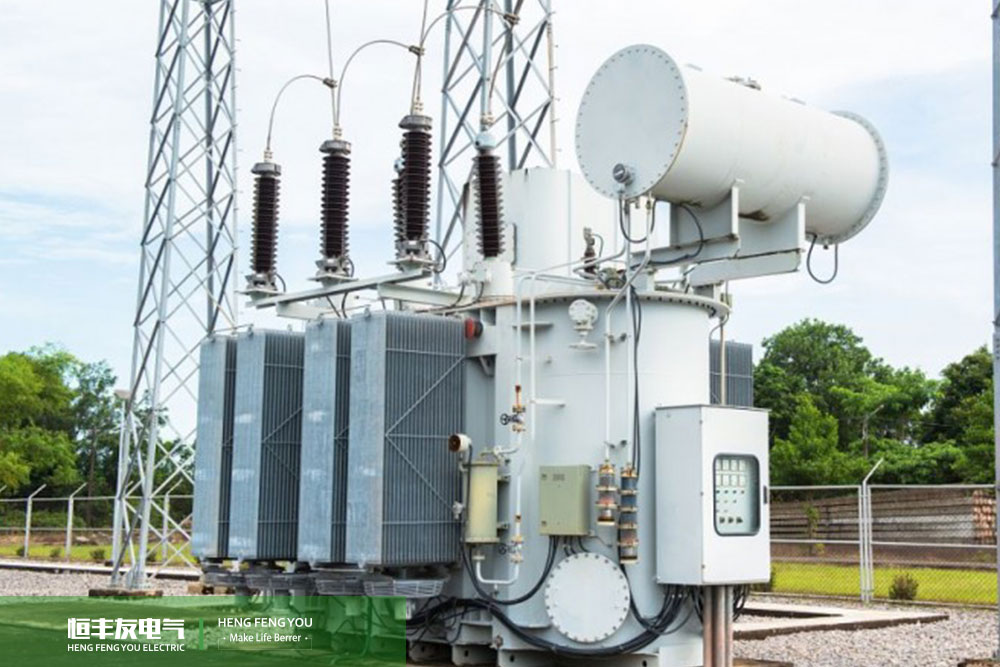5 key points of transformer maintenance
Writer: Hengfeng you electric Time:2023-04-21 views:times
Abstract: Transformer is very common in life. The alternating current we use is reduced through a transformer. The transformer is composed of iron core (or magnetic core) and coil. The coil has two or more windings. The windings connected to the power supply are called primary coils, and the remaining windings are called secondary coils. It can transform AC voltage, current and impedance. Do you know how to maintain the transformer? Generally speaking, the temperature rise, temperature, capacity and load of the transformer shall be kept within a reasonable range. Hengfengyou Transformer summarizes five points of transformer maintenance:
1. Allowable temperature
When the transformer is running, its coil and iron core will produce copper loss and iron loss, which will become heat energy and raise the temperature of the transformer core and coil. If the temperature exceeds the allowable value for a long time, the insulation will gradually lose its mechanical elasticity, leading to insulation aging.
When the transformer is running, the temperature of each part of the transformer is different. The coil temperature is the highest, followed by the core temperature. The temperature of insulating oil is lower than that of coil and iron core. The upper oil temperature of the transformer is higher than the lower oil temperature. The allowable temperature of the transformer during operation shall be checked according to the upper oil temperature. For Class A insulated transformer in normal operation, when the ambient air temperature reaches 400 ℃, the limiting operating temperature of the transformer winding is 1050 ℃. Since the winding temperature is 100C higher than the oil temperature, it is stipulated that the upper oil temperature of the transformer shall not exceed 950C to prevent the oil from deteriorating. In general, the oil temperature should not exceed 850C to prevent the insulation oil from being oxidized. For transformers with forced oil circulating water cooling and air cooling, the upper oil temperature shall not often exceed 750 ℃.

Monitoring the upper oil temperature only during the operation of the transformer cannot ensure the safe operation of the transformer. It is also necessary to monitor the temperature difference between the upper oil temperature and the cooling air - that is, the temperature rise. The difference between transformer temperature and ambient air temperature is called transformer temperature rise. For Class A insulated transformer, when the maximum ambient temperature is 400C, the national standard stipulates that the winding temperature rise is 650C, and the allowable oil temperature rise is 550C. As long as the temperature rise of the transformer does not exceed the specified value, it can ensure the safe operation of the transformer within the specified service life under the rated load.
3. Reasonable capacity
During normal operation, the power load of the transformer shall be about 75-90% of the rated capacity of the transformer.
4. The maximum unbalanced current of low voltage transformer shall not exceed 25% of the rated value; The allowable range of transformer power supply voltage variation is plus or minus 5% of rated voltage
If this range is exceeded, the tap changer shall be used to adjust the voltage to reach the specified range. (The power supply shall be cut off during regulation) Voltage regulation is usually achieved by changing the tap position of the primary winding. The device for connecting and switching tap positions is called tap changer. It adjusts the transformation ratio by changing the turns of the high-voltage winding of the transformer. of Low voltage has no effect on the transformer itself, only reduces some output, but has an impact on electrical equipment; When the voltage increases, the magnetic flux increases, the core is saturated, the core loss increases, and the transformer temperature rises.
5. Overload
Overload can be divided into normal overload and accident overload. Normal overload is caused by the increase of power consumption of users under normal power supply conditions. It will increase the temperature of the transformer, accelerate the aging of the transformer insulation, and reduce the service life. Generally, overload operation is not allowed. Under special circumstances, the transformer can be overloaded for a short time, but it should not exceed 30% of the rated load in winter and 15% in summer. In addition, the overload capacity of the transformer shall be determined according to the temperature rise of the transformer and the regulations of the manufacturer.
Hengfengyou transformer summary: when an accident occurs in the power system or user substation, in order to ensure the continuous power supply to important equipment, the transformer is allowed to operate under overload for a short time, that is, the accident is overloaded. Unexpected overload will cause the coil temperature to exceed the allowable value. Therefore, the aging rate of insulating materials is faster than normal. However, there is less chance of accidental overload, and the transformer is under loaded under normal conditions, so short-term overload will damage the insulation of the transformer. The time and multiple of accident overload shall be subject to the manufacturer's regulations.

